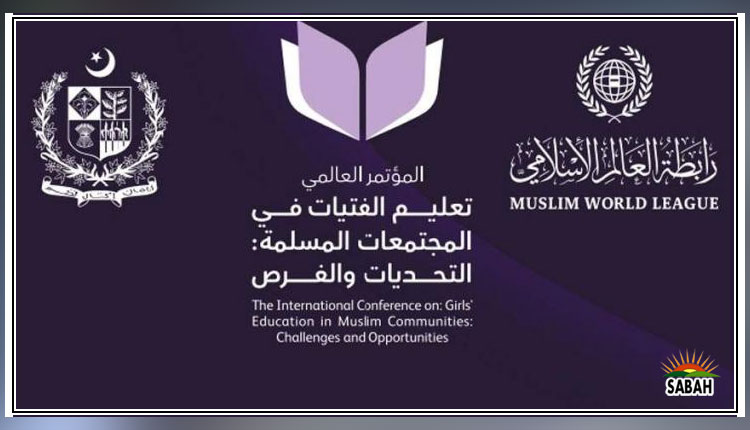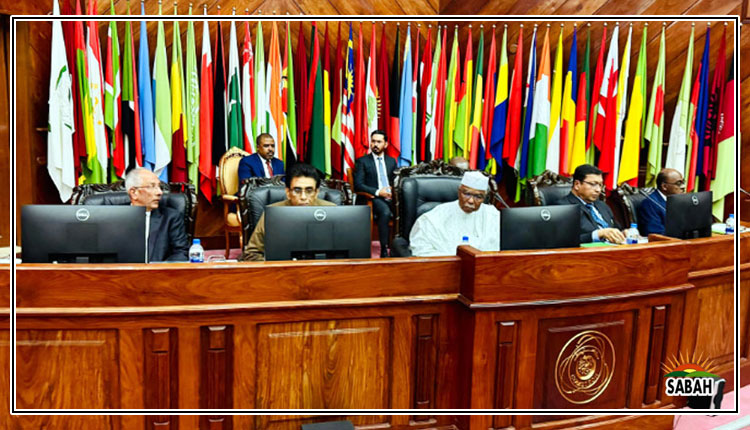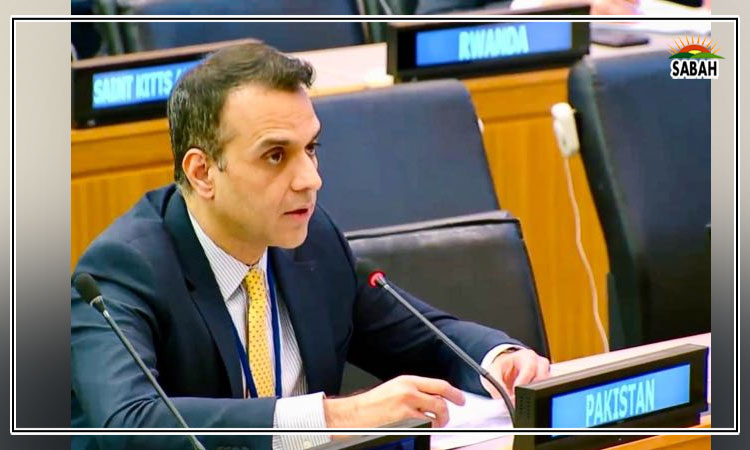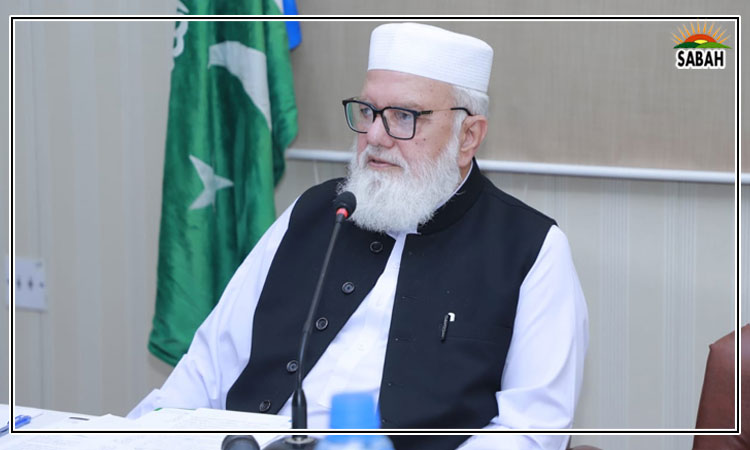Through creative destruction: Part – I…Syed Asad Ali Shah
Continuing from my last article in these pages (Breaking the IMF cycle, February 22), the tragedy of Pakistan is that it is poor despite being rich in natural resources. It is a land of breathtaking natural beauty, encompassing everything from lush greenery to towering peaks, stunning shoreline to vast deserts, several rivers to provide fresh water and abundant mineral resources.
However, the most important asset of any nation is not its natural resources but the quality of its people. With proportionately one of the largest illiterate and unskilled population, the countrys biggest weakness that has eroded its productivity and competitiveness is underdeveloped human capital. We have too many people to feed who are unproductive, do not add value and do not collaborate.
The other most important problem linked with the substandard quality of human resources is a rather woeful state of entrepreneurship, which can be traced back to poor governance and management. From ineffective parliamentary oversight to bloated governments, excessive regulation, and astronomical taxes, Pakistan has accumulated a multitude of problems that have stifled its entrepreneurial spirit.
The success of any nation is dependent on the strength of its businesses, which must be robust and innovative enough to create high-quality goods and services at a competitive cost. If Pakistan is to compete in the global market, it must create an ecosystem that encourages tech-based entrepreneurship, promotes investments in disruptive ideas, and leverages cutting-edge technologies to create a dynamic start-up culture. Only then can the country thrive in the new 21st century innovation economy.
Several case studies exist that offer direction on how improved policies, initiatives, and governance in other regions have led to economic transformations. A relevant example is the digital India and start-up India programmes initiated in 2015 and 2016 respectively. These were initiated, fully owned and committed by the Indian prime minister and completely transformed the Indian economy.
The scale of digitization in India can be gauged from the fact that in 2022 India had the highest real-time payment transactions in the world 70 billion in total while its ranking in the number of start-ups and number of unicorns was second and third largest in the world in 2022. It is due to these initiatives that India started to receive the huge FDI that has transformed their economy. Out of the total FDI received in India in the past 75 years of $950 billion, about $530 billion or 56 per cent have been received in the last 7.5 years, after the launch of the above initiatives, making India now the fastest growing economy in the world.
In this era of the Fourth Industrial Revolution, the digital age is a hotbed of activity, with countless enterprises springing up every day. These innovative companies are changing the world for the better through 5 Ds disruption, digitization, demonetisation, dematerialization and democratization. This means that there is constant progress in reducing cost and time, improving quality of goods and services, and increasing customer satisfaction. Unfortunately, Pakistans landscape is dominated by enterprises dealing in basic commodities and traditional brick-and-mortar, adding very little value and unable to compete in the new tech-enabled world. This status quo must change radically if Pakistan has to keep pace with the rapid advancements taking place around the globe.
As the old saying goes, every crisis presents an opportunity but all too often, we have squandered ours. Now is the time to unleash the power of creative destruction in Pakistan, a concept championed by Austrian economist Joseph Schumpeter. Drawing on the ideas of Karl Marx, Schumpeter believed that innovation is driven by the decay of long-standing practices, procedures, products, or services, replaced by more innovative, disruptive ones. This principle recognizes that old assumptions must be dismantled so that new ones can flourish, leveraging existing resources and energy.
In Pakistan, we urgently need to apply this approach because our laws, procedures, processes, and practices were simply copied from the pre-independence era of the British Raj without much thought. Over time, these systems have deteriorated significantly, leading to a catastrophic decline in the governments ability to deliver basic services like education, healthcare, population planning, security, water supply, agriculture, and more, while simultaneously driving up the cost of governance. To thrive in the modern world, we must embrace the creative destruction of old systems and pave the way for new and innovative approaches that can harness Pakistans immense potential.
While I suggest a few simple proposals in this and other articles, also discussed by many others, most of these ideas are simple but will not be as easy to implement; as this is not an exhaustive study that contains a solution to all our ills. It is suggested that the federal and provincial governments engage a few top global firms that have worked to transform governments and the public sector to assist in carrying out diagnostic studies on why Pakistan as a country has not progressed, what needs to be done to address our deep-rooted ailments, and to assist in developing a credible roadmap and restructuring strategies that can help enhance the countrys productivity and competitiveness.
One basic conceptual issue observed with all past IMF programmes was they only focussed on increasing revenue, neglecting the most significant challenge of reducing cost. Meanwhile, Bangladesh, once among the least developed economies in South Asia, now leads the region in per capita income, thanks to its comparatively low government expenditure of only 14 per cent of GDP, whereas our country spends 22 per cent of GDP on governments. Too many departments, coupled with an excessively large bureaucracy and government workforce, using outdated rules and procedures burden both the people and businesses. It is time for a major overhaul of the government structure to improve its efficiency and effectiveness.
The 18th Amendment transferred significant responsibilities to the provinces such as education, health, labour and the environment. However, the federal government has failed to close down all the corresponding ministries and divisions. Currently, with a bloated cabinet of 84 members, it has 33 ministries and 40 divisions. It is time to eliminate such duplication. By consolidating functions, getting rid of unnecessary departments and cutting down on the bureaucracy, the government can reduce costs, work more efficiently and ultimately deliver better service to the people. Rather than a top-heavy approach to governance, there needs to be a shift towards horizontal organizations that prioritize simplicity, process reengineering and service delivery.
There is also a need for drastic reduction/closure of a large number of attached departments and agencies, as most of them are an unnecessary burden.
To bring the government into the modern era, it is critical to embrace digitization and intelligent automation. The 21st century demands a more agile and smart government that leverages e-government, operates in a digital environment and automates all records, files, communications and processes with minimal paper usage.
For this, a comprehensive e-government plan was prepared by a subgroup which I headed as part of the prime ministers taskforce on government restructuring chaired by Dr Ishrat Husain. The plan was also approved by the then cabinet. Unfortunately, the implementation of the plan was hindered by bureaucratic red tape and delay in release of the budget.
To ramp up the scale and pace of digitization, which will increase transparency and greatly enhance speed and quality of decision-making, it is critical to swiftly implement e-government in all governments in Pakistan. Further, the aim should be to cut manpower by at least 50 per cent, not just to reduce cost, but also to enhance quality and timeliness of services.
To be continued
Courtesy The News












